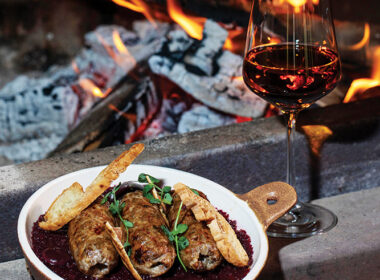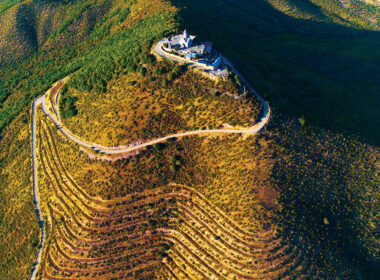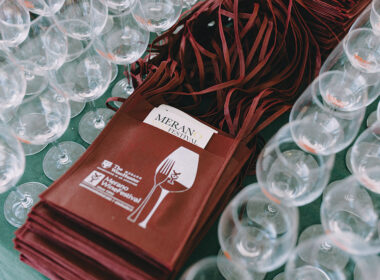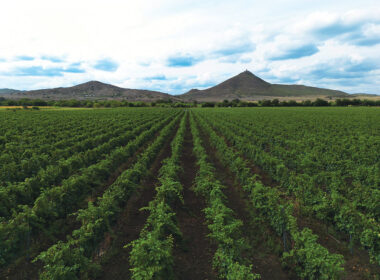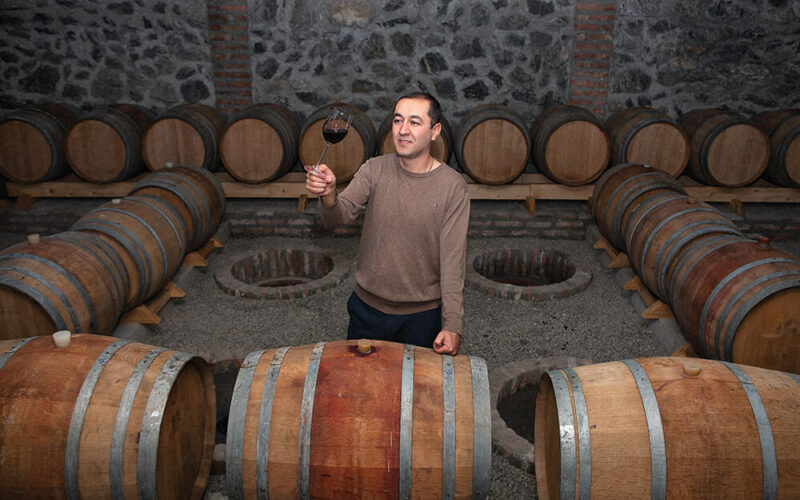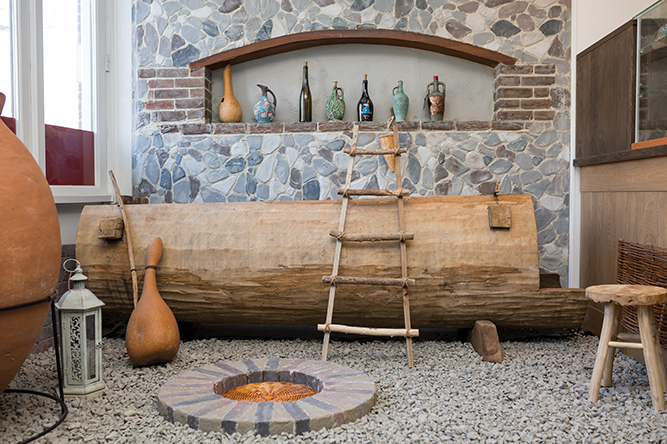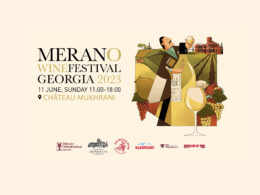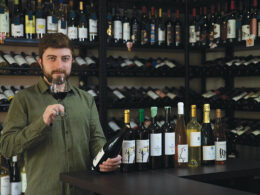Kakha Tchotiashvili, founder of “Tchotiashvili Cellar”, director of “Satsnakheli”, enologist, winemaker, member of Degustation Commission
He was always around qvevri, since his father and grandfather made wine with it. He regularly took part in grape harvest, qvevri cleaning and making wine. This tradition continues in his own family, where even the smallest members have their own emotions and attitutes towards wine. He remembers the exact time when other vessels replaced qvevri, but he remained loyal. In 1999, when he was 19, he started working at a wine producing company, where wine was made in tanks. He made a request to have qvevri and the company trusted him. He still remembers one phrase that a fellow winemaker told him: “You are like Don Quixote, fighting against windmills”.

Wines from “Tchotiashvili Vineyards” are sold in a number of countries, marking a succesful completion to a long and arduous process of winemaking – from harvest to bottling. Kakha has his own attitude towards each stage of the process; he thinks that no winemaker can be satisfied with results unless he puts a lot of effort into it; he believes that quality is paramount, along with a scrupulous and mathematical approach to work, because no other way results in great wine.
“Today we are at the stage when the world is getting to know Georgia as a winemaking country that has centuries old winemaking traditions. Each year our wine is represented on various festivals and exhibitions. Different wine specialists, writers and bloggers visit Georgia. This is a decisive moment, when we show the world if we are makers of good or low quality wine. Each one of us has to make it a priority to present only the best quality wines to the world and stand among the best.
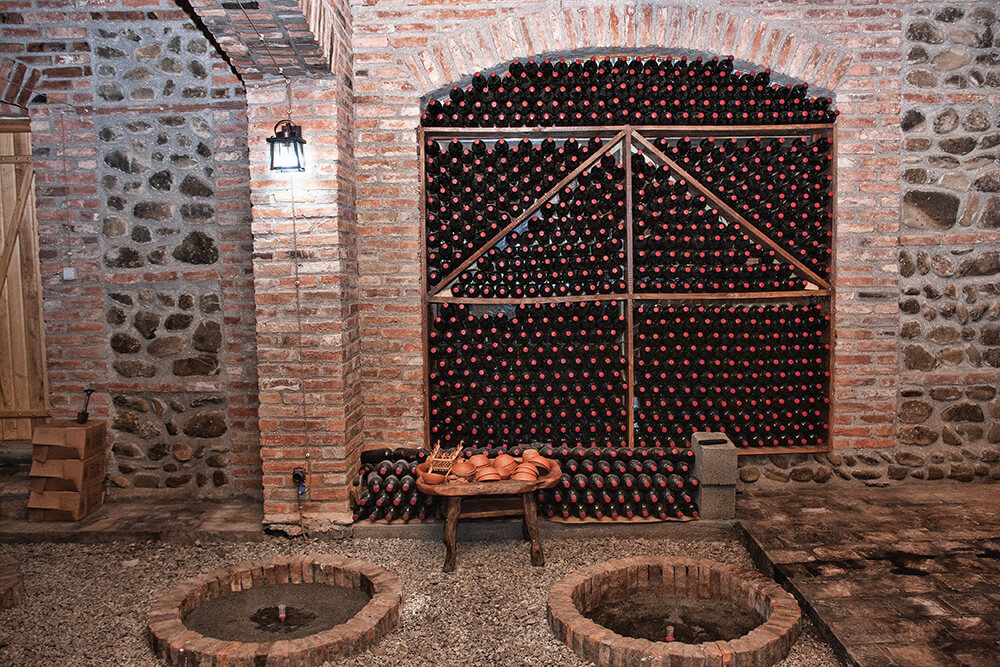

Winemaking in Georgia is a certain responsibility – when you are Georgian, and your country is homeland of wine, when 500 out of 4000 aborigineous varieties of the world are represented in your country, winemaking becomes much more than just making wine, bottling and selling. A Georgian winemaker has to know all Georgian grape varieties, most of which are forgotten. He or she has to take part in their revival. Clearly, not all grapes are fit for winemaking, but we have to know everything there is to know about the ones that are. A number of Georgian varieties have a potential to make intersting wines –whether in qvevri, barrels or using European techniques.
Right now we have 42 grape varieties in our vineyards, namely: saperavi, Budeshuri saperavi, chitistvala, tavkveri, kisi, rkatsiteli, kakhuri mtsvivani, khikhvi, kakhuri mtsvane, muskaturi rkatsiteli etc. We mostly make dry wines in qvevri, using traditional technologies. We also try to find and grow grapes that are on the verge of going extinct and experiment with them. Not every year is the same – climate is changing; some years are good for vineyards, some are not. Growing grapes, harvesting and making wine requires time. Wine itself becomes more interesting with age. All of this is an exciting process, and the more we know about Georgian grape varieties, the better our wines will be and the greater our sense of pride.
Georgia is a qvevri country and since our topic is qvevri wine, there are a number of important aspects that a winemaker should consider to make good wine.
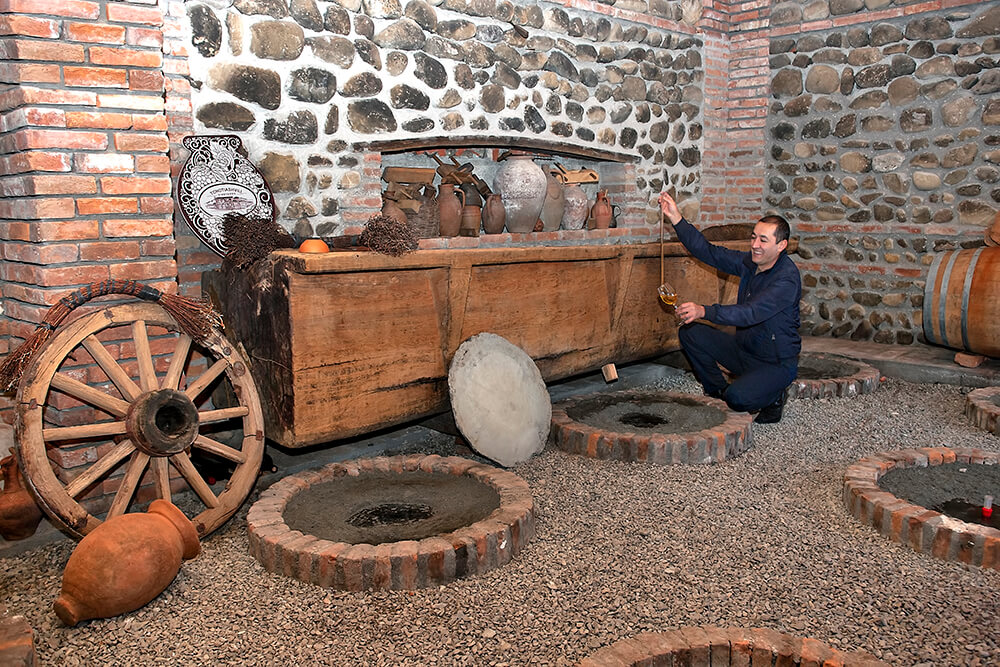
Soil
It is paramount to know if the soil is fit for growing grape. Sometimes the vineyard is planted in a wrong place, or the conditions don’t really fit a specific grape variety. If the soil lacks minerals, it will pose problems later on, in an already grown vineyard. Frequent consultations with professionals are necessary to ensure that everything is correct.
Saplings
They have to be chosen with great attention. First of all, we have to know that we are buying exactly the variety we want. Second, they have to be healthy. If the saplings are infected with fungal or viral diseases, and they show only in a grown vineyard, you can image what kind of problems that might pose.
Overharvesting
This is one of the biggest problems – a true enemy of a viticulturist and wine. Using fertilizers that artificially increase harvest affect the quality of the grape. Wine made from it is undrinkable. We have to control all of the substances we use in the vineyard, so the grapes and wine are healthy.
Rtveli
The better we manage Rtveli, the better our wine will be. Before we start Rtveli, we have to make sure that the grape is ready for harvest. Some viticulturists only look at sugar content, however that indicators doesn’t mean much. We have to remember that each year is different, and judging ripeness only by grape berry is not enough, especially if we are using qvevri to make wine, the stalks have to be ripe too.
Time of harvest is also essential. Noon is not a very good time, for example, and let me explain why. As you may well know, Rtveli takes place in September-October, when it’s still quite hot. When you harvest grape at noon, its temperature is quite high and will rise even more when fermentation starts, which will lower the quality of wine.
We have small Rtveli in our vineyards that starts at 6 in the morning and ends at noon. Our only mission is to deliver the grape to our cellar for processing on time and unharmed. When we start processing, we take extra care to separate unripe or damaged berries, from healthy ones, because if the grape juice is not a 100% pure when it goes into qvevri, it will spoil the wine. Unlike in any other winemaking technique, stalks remain with grapes in qvevri for a number of months (8 in our case), so it is paramount that each berry is healthy.


Vessels
It is essential to choose the right vessel at every stage of winemaking. I have stopped using zinc buckets in Rtveli. They contain zinc that tranfers into wine. Trust me, one Rtveli with zinc buckets and your wine will be rich with this heavy metal, which can be dangerous for health. Same goes for plastic vessels or plastic bags. You can have a magnificent Rtveli, but spoil the wine using wrong vessels. It is always better to use wooden boxes and baskets, specialized plastic, or, in case of a large production, stainless steel.
Qvevri
A well-made qvevri is an indispensable piece of equipment in making good wine. In our celllar, we have new as well as century-old qvevri that we use to make wine.
Interest in qvevri has certainly grown and today our potters not only have local orders, but orders from abroad. Reputation of qvevri is in their hands, because they are the ones that have control over all the factors that go into making good product.
I am a mathematical physicist by education and I like to pick my brain and dig deep into any subject that interests me. I have always had a deep connection with qvevri. I was lucky enough to participate in one of the GIZ projects, in which we collected different clay samples from different quarries and send them to research institute in Germany (we also sent qvevri pieces). All of the samples were carefully studied and the results showed that the clay we use to make qvevri is absolutely harmless for wine. However, there were still couple of remarks.
There is no better experience, than opening a qvevri, feeling the aroma of wine and taking the first sip. You get this sensation only with qvevri. No other vessel has the power to do that. Qvevri has one magnificent ability to make you fall in love with it. The more you take care of it, the more you work and put your energy into it, the more you’ll love what you do. Wine is a divine liquid for all Georgians.

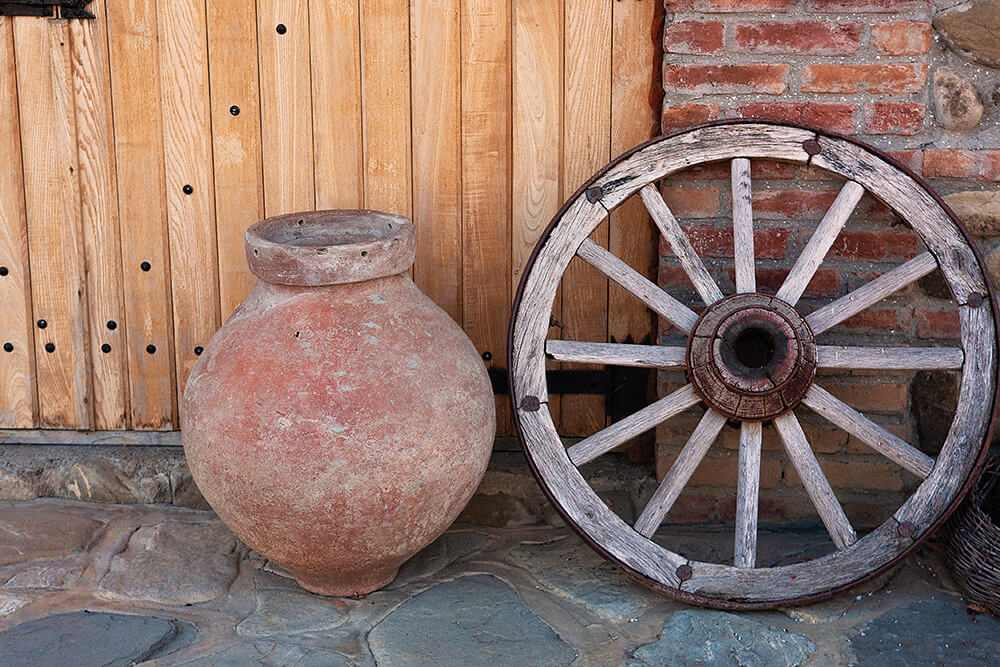
Firing is very important. If you are in a hurry to build a cellar, and you plant a qvevri that has not been fired correctly, you will not get a desired result. Today, when demand on qvevri is growing, we have to pay extra attention to its quality. Even if one small pebble gets mixed up with clay, it can crack qvevri during firing. Another mistake is firing at wrong a temperature, either too high or too low, in which case you will get a qvevri that shrinks, which can have a negative effect on quality of wine. A well-made and maintained qvevri withstands centuries – there are 8 century-old qvevris in Alaverdi, which are still used in winemaking.
Some people think that qvevri does not need any care when it is empty. In fact, the opposite is true. It’s absolutely forbidden to use modern desinfecting solutions or water jets, because they will inevitably damage qvevri. We can still find wine on the market with undesirable microbiological problems, which are the result of incorrect care for qvevri.
You might hear some folks say they will seal qvevri and not touch it for 6 months. I call this a superstition. Wine needs lab tests and chechical control on every stage, so that you know what stage it is going through and if it is healthy.
Once wine is in qvevri and all the processes have started, winemakers can’t relax. They need to be alert and in control of the whole thing. When everything is right and a good wine is poured into bottles, only then can he or she be at ease. From this moment on, the only issue that is in the agenda is storing the wine in right conditions.
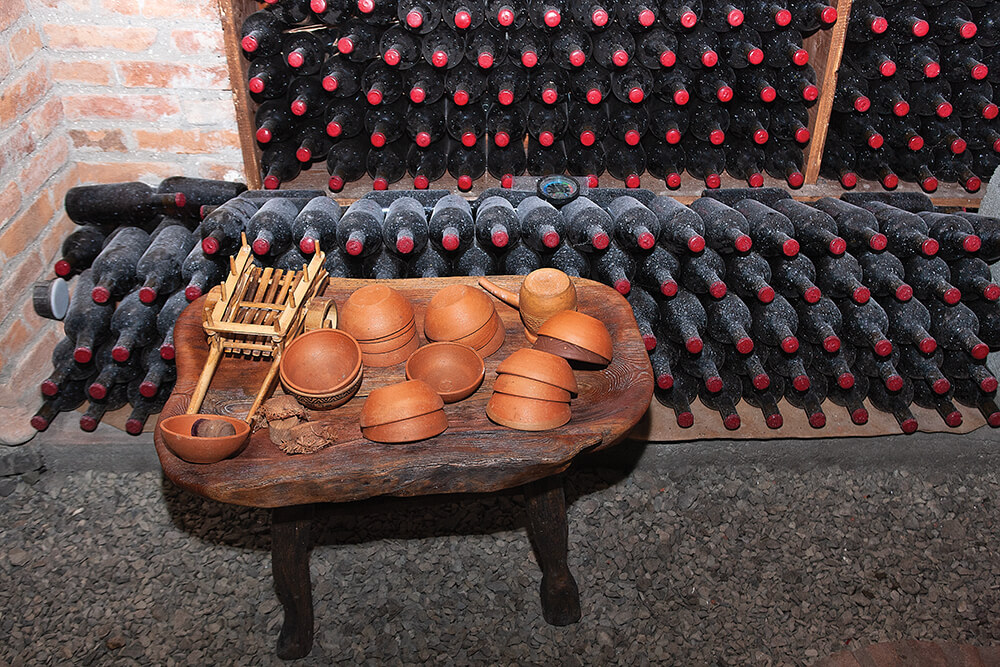
Setting up a cellar
The place for a cellar has to be chosen well. It is not desirable to set up a cellar and plant qvevri near water canals or small streams, or any place with high humidity. The cellar has to be well ventilated, especially during autumn, when fermentation starts, because wine as well as people attending to it, need fresh air. Temperature fluctuations in the cellar are unacceptable: wine doesn’t like drastic temperature changes, from too cold to too hot. This affects the taste of wine and generally speaking we have to understand that any incorrect detail will definitely impact wine.And last, but not least – hygiene, which is crucial in every cellar.
All of this is like a mathematical equation where even a smallest alteration can lead us to a different answer.
- I cannot help, but ask you about your Saperavi, which is a prominent wine in your portfolio.
- We make our Saperavi in qvevri, together with stalks, which is not very common. We have a late Rtveli that starts when the Caucasian mountains are all white and the evenings are noticeably colder. All of this plays an imporant role in qvevri wines – they turn out to be more lively and acidic. High acidity helps wine age better – our wines are already a couple of years old – but still look young. It makes me happy to have wines so immune that they can be aged for a long time. For example, we have wines from 2010 that are in great shape and leading experts frequently praise them.
Do you want to know what I expect from Saperavi? I don’t like when Georgian wine tastes like wine from other countries. I want to capture our character in each of our wines. And this character appears when stalks are used. When this wine is young, it can seem rough, but when tannins ripen, it becomes very interesting and full of character. Our Saperavi has a slightly aggressive acidity at the end, but this acidity helps preserve aromas, and it pairs magnificently with Kakhetian dishes. I like this kind of character in wine – its authentically Georgian.
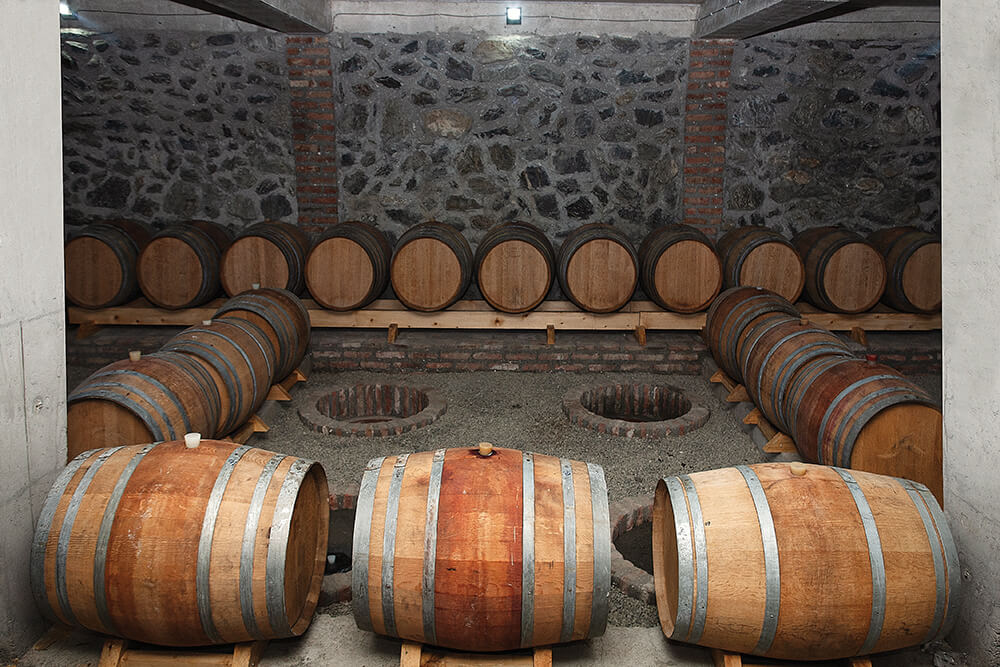
For example, I think that Aleksandrouli and Mujuretuli are a lot like a man from Racha. Saperavi, made with stalks, a bit bitter, a bit aggressive – is much like a man from Kakheti. Imeretian, high acidity wines, that seem to make you uneasy, remind me of my Imeretian friend.

